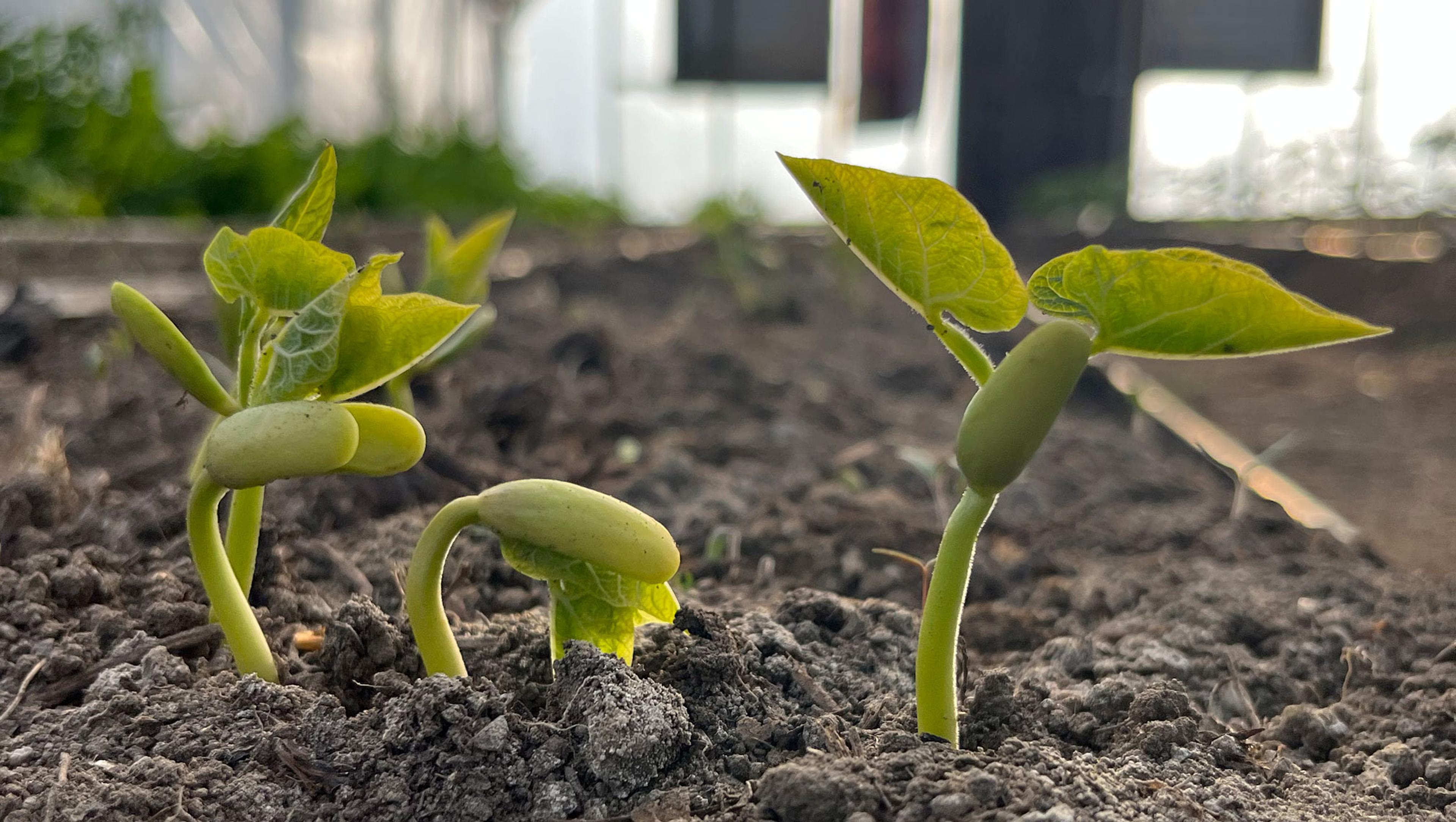Today, May 4th, the first pole beans poked their heads above the ground inside our greenhouse at Karmê Chöling. Outside it is still windy and cold.
Watching the birth of a plant, after warding off countless challenges from above and below, invariably fills me with awe and joy. After forty years of gardening, I still don’t take anything for granted and use the utmost care to aid the fragile process of germination.
For me this process starts with building a healthy soil that is teaming with life: Microbes, fungi, and countless other visible and invisible creatures that create a beautiful soil structure, like an underground cathedral, with lots of open spaces for water and air to move up and down, in and out. Like the skin of our own body this earth needs to breathe!
The question may arise: What can we do to support and strengthen these all-important microbial networks in our garden soil?
First of all, we try to have this soil covered with living plants as much as possible. Plants have an extraordinary ability to capture sunlight and carbon dioxide from the air and draw moisture from the soil. They then rearrange these different molecules into simple sugars and oxygen, thus laying the foundation of this fantastic world we live in.
Through this process of photosynthesis, plants not only grow roots, stems, leaves, and flowers, they also transport 10-30% of the carbohydrates produced in their leaves to the soil surrounding their roots - so-called root exudates - where they become like bitesize cookies feeding the microbes who have amassed themselves for a continuous banquet. Aside from improving soil structure, these bacteria and fungi also deliver essential minerals and moisture to the plants.
In recent years we’ve also learned that plant roots eat bacteria directly through a process called rhizophagy cycle. This insight is likely to have profound implications for all farmers and home gardeners because, when taken to full advantage, it opens a biological pathway for complete plant nutrition. This is the way of natural ecosystems.
An alternative to having green plants cover the soil is to use a generous layer of leaf mulch, grass clippings, or straw. This will also feed and protect the microbial community underneath.
Next, to not destroy soil structure, we disturb the soil as little as possible, which allows for fungal networks to grow and thrive further. We may use a garden fork to lightly aerate (not turn) the top 7-9 inches.
Third, we spread biologically active compost on top of the soil, not for nutrition but primarily to inoculate and feed the soil microbes. Only when we need to seed a crop directly, spinach or carrots for instance, do we fork the compost into the top 2 inches and rake the bed smooth. Generally I do not recommend animal manure unless it was composted in a hot compost pile.
Lastly, I want to mention the benefits of microbial inoculants. You may have used a nitrogen fixing inoculant for peas and beans in the past. In recent years, research has shown which strains of bacteria and fungi are particularly beneficial to healthy plant growth. Many new products have appeared on the shelves of nurseries and catalogues.
I recommend that you check out this new development. At Karmê Chöling, we use several products from Advancing Eco Agriculture and Tainio Biologicals that have helped our garden to flourish even more, including great germination of our pole beans. We have seen a steady reduction in insect pests and less need for soil fertilizer because these beneficial microbes both directly and indirectly feed the plants.
If you want to learn more, join Karmê Chöling this summer for our Regenerative Gardening program co-taught by myself and Donna Williams, August 12-19.
May these suggestions benefit you and your garden.
Jan Enthoven
Was this helpful?
Share This


